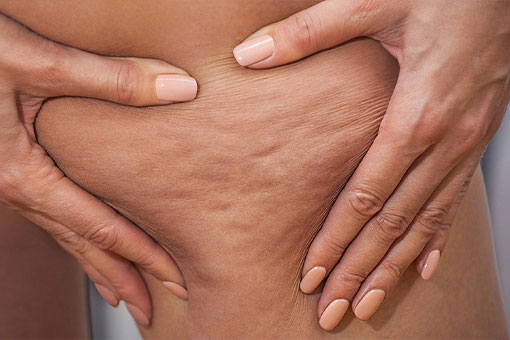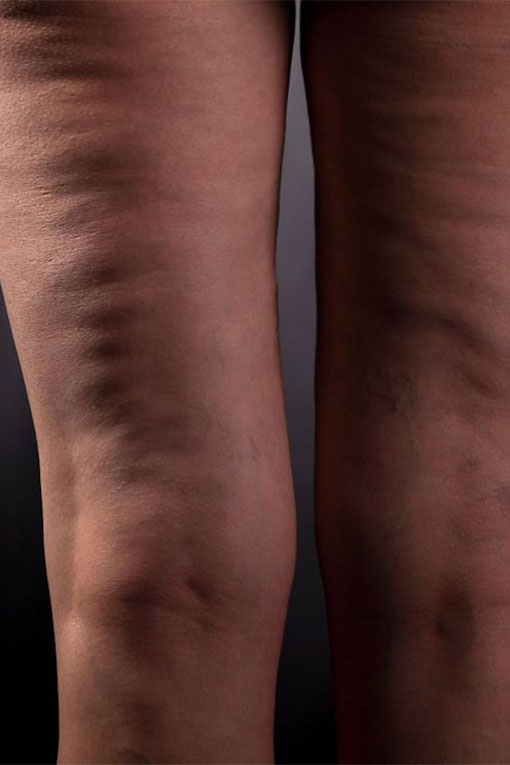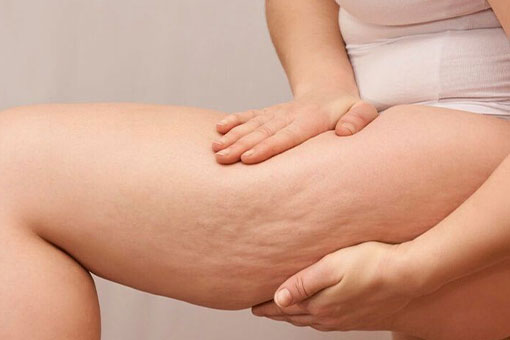Expert Cosmetics Since 2017
Choice of Five-Star Clinics
Friendly and Knowledgeable Team
Cellulite
Cellulite is the terminology given to collections of fat that press against the connective tissues beneath the skin, which leads to a bumpy and dimpled appearance to the surface of the skin. Most commonly, cellulite is a condition that affects the thighs, stomach and buttocks but can affect other areas too.
Approximately 80-90% of all women who have been through puberty will have cellulite on their body making it one of the most common conditions that can affect the body, but the good news is that it isn’t harmful at all. In contrast, less than 10% of men have cellulite so while it’s very common for women, it’s very uncommon for men.
Your genes, age, gender and the amount of fat that is on your body will directly determine the amount of cellulite that you have and just how visible it actually is. As we age the skin will naturally lose its elasticity which can make cellulite appear to be more evident, and undergoing significant weight change can also make any cellulite appear to be more prominent.
What causes cellulite?
This is where it gets a little bit tricky, because it’s not really known what actually causes cellulite to show. Cellulite forms when the bands that connect the skin and muscle together are ireggularly tightened, causing the skin to pull down against the normal fat layer beneath the skin.
It’s also not known why cellulite is more common in women than in men either, one theory is that the bands that connect the muscle and skin are parallel in women whilst in men they crisscross which could have some effect on how cellulite shows on the skin, whereas another theory links cellulite to higher levels of the hormone estrogen which is backed by the appearance of cellulite often lining up with times when women produce more estrogen such as adolescene or pregnancy.


How is cellulite characterised?
Cellulite is characterised quite simply as a dimpling, puckering or “orange peel” appearance to the surface of the skin which is most commonly seen on areas of the body where fat is typically found in larger deposits, such as the thighs and buttocks. To make things easier, cellulite is separated into four individual grades which are;
Grade 0
There is no cellulite found anywhere on your body
Grade 1
When stood up your skin appears to be smooth but when you sit down a mild amount of dimpling starts to be visible
Grade 2
There is always a moderate amount of dimpling to the skin whether you are stood up or sat down
Grade 3
There is always a severe amount of dimpling to the skin whether you are stood up or sat down, with the skin also having pronounced valleys and peaks as well (raised and sunken areas)
The grading system lets you understand just how severe your cellulite is and will allow you to figure out the best course of treatment if you decide that it’s necessary to fight the appearance of cellulite on your body.
How is cellulite characterised?
Cellulite is characterised quite simply as a dimpling, puckering or “orange peel” appearance to the surface of the skin which is most commonly seen on areas of the body where fat is typically found in larger deposits, such as the thighs and buttocks. To make things easier, cellulite is separated into four individual grades which are;
Grade 0
There is no cellulite found anywhere on your body
Grade 1
When stood up your skin appears to be smooth but when you sit down a mild amount of dimpling starts to be visible
Grade 2
There is always a moderate amount of dimpling to the skin whether you are stood up or sat down
Grade 3
There is always a severe amount of dimpling to the skin whether you are stood up or sat down, with the skin also having pronounced valleys and peaks as well (raised and sunken areas)
The grading system lets you understand just how severe your cellulite is and will allow you to figure out the best course of treatment if you decide that it’s necessary to fight the appearance of cellulite on your body.

What cellulite treatments are available?
At Better Body Cosmetic Group, we are proud to offer treatment methods to fight the visible appearance of cellulite on the skin. During a consultation with a member of our team, we will be able to analyse your skin and work out what the best course of action is for you. We’re aware that the issues related to cellulite run deeper than just the visible parts of the skin and that it can have a deeper effect on your self esteem.
If you’re looking to make a change to your skin and fight the visible signs of cellulite that are stopping you from feeling confident in your own skin, get in touch with us today to find out more about how we can help you.

Speak to an expert today
Give us a call or fill in our easy to use online form and a member of our customer support team will be in touch with you at a time and date that works best for you.
Frequently Asked Questions
Can you get rid of cellulite?
While there is no way to completely get rid of the appearance of cellulite on the skin, there are treatments that can reduce the appearance which can results in smoother looking and tighter skin.
Why do I have cellulite but I'm skinny?
Cellulite only affecting people who are larger is something that is a bit of a myth, when in actual fact cellulite is something that can occur to anyone, no matter what their weight is. Cellulite doesn’t correlate to the percentage of fat within the body, but more to the actual structure of the fat.
Is cellulite different to fat?
Cellulite is something that develops from an interaction between fat cells beneath the surface of the skin and the tissues and fibrous bands that connect the skin to the muscle. Essentially, cellulite is just fat that is made to have a dimpled appearance due to the skin pulling against it.
Does cellulite hurt?
Cellulite doesn’t pose any major risks or health concerns for your body, and it most certainly doesn’t cause any pain. The only major issue that it causes is related to self esteem and confidence.
Is cellulite hard or soft?
Cellulite can be either hard or soft, depending on your age and levels of activity. Generally, harder cellulite is found in younger women who regularly exercise whereas softer cellulite is founder in those who are more inactive or have recently lost weight.
Or call our team to arrange your consultation today:
- 0800 772 0039
View our latest news
The Fascinating Evolution of Cosmetic Surgery: A Journey Through Time
When we think of cosmetic surgery today, the images that often come to mind are those of celebrities with perfectly chiseled features or individuals undergoing transformative procedures for a rejuvenated appearance. However, the art and science of altering the human...
Stay connected


